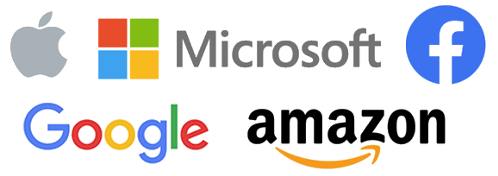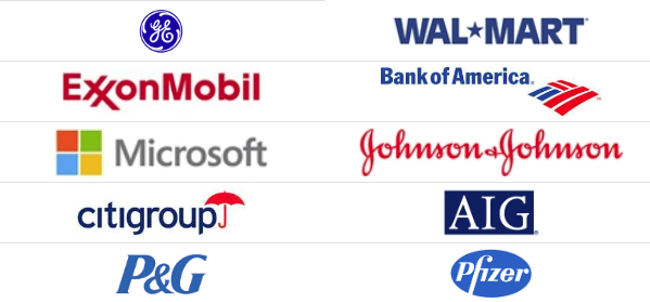Written by: Sean P. Smith, CFA
After declining sharply between mid-February and late-March, and despite few signs of a near-term resolution to the economic impact of the pandemic, the stock market proceeded to rebound meaningfully through April and into early May. Or did it?
In its current form, the return on what we all think of as "the stock market" is not representative of the actual stocks that comprise it.
How can that be?
We are all accustomed to viewing the S&P 500 index - the 500 largest U.S. companies - as "the market". The index is weighted by company size, meaning the greater the value of a company, the larger its share of the index.
Today, the index is dominated by five extremely large companies, all having an emphasis on tech: Microsoft, Apple, Amazon, Google, and Facebook now account for more than 20% of the value of the entire S&P 500.
Top 5 S&P 500 Components in 2020

These specific companies have been less impacted by the pandemic than most other businesses, and in some cases have seen their competitive positions enhanced. Indeed, we noted near the market lows in late March that the extent of the selloffs in these very types of companies did not seem justified in light of their strong financial positions and long-term operating outlooks.
Given their outsized impact on the market indexes, however, the swift rebound in the stock prices of those five largest companies has masked a more muted rally throughout much of the remainder of the market.
The five largest companies now have a combined market value equal to that of the "smallest" 360 stocks within the S&P 500 index. And their combined value is 2.5 times that of the aggregate value of the entire small-cap and mid-cap domestic stock indexes.
This concentration at the top wasn't always the case. Seen below, the 10 largest components of the S&P 500 in 2005 offered not only a more diversified sample of the overall market, with businesses in wider range of sectors, but were much less concentrated as well. The five largest tech-dominated companies today make up a greater share of the S&P 500 index than these 10 largest companies did 15 years ago, for example.
Top 10 S&P 500 Components in 2005

Most investors still likely think of "the market" more in terms of the mix of companies above, but the reality has changed.
And that change has a huge impact on measuring overall "market" returns. Excluding those five largest companies, the next 1,495 stocks comprising the broad market S&P index were still down by an average of about 27% in 2020 through mid-May. At the low point in March, they were down by an average of more than 40%.
In a market where the headlines are strongly dominated by the influence of a handful of extraordinarily large companies, we are continuing to act prudently by focusing on long-term valuations, and are making moves to capitalize on opportunities or to minimize risk depending on prevailing conditions. We anticipate that market volatility will remain elevated in the current environment, and we are working to consider factors on both ends of that spectrum that go well beyond those of the very largest companies.

